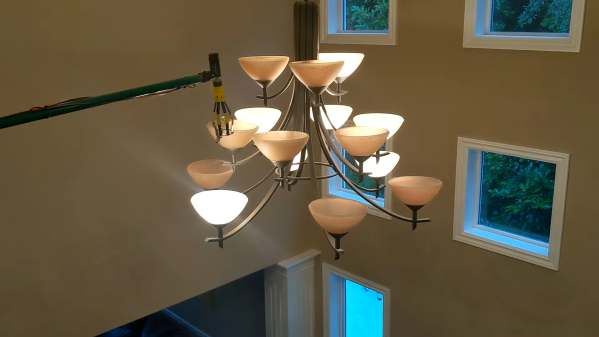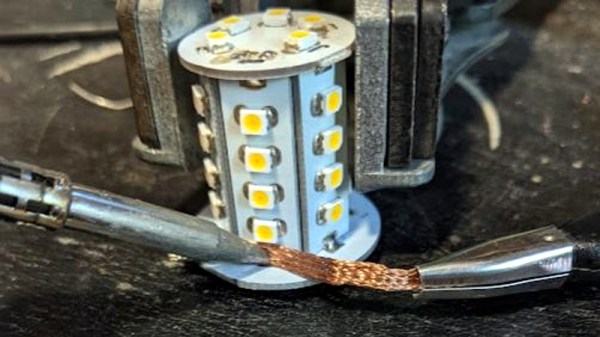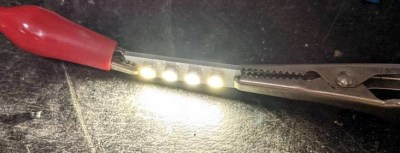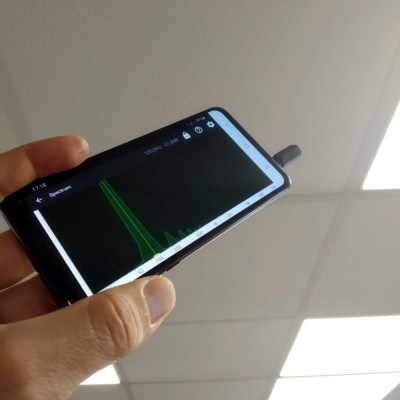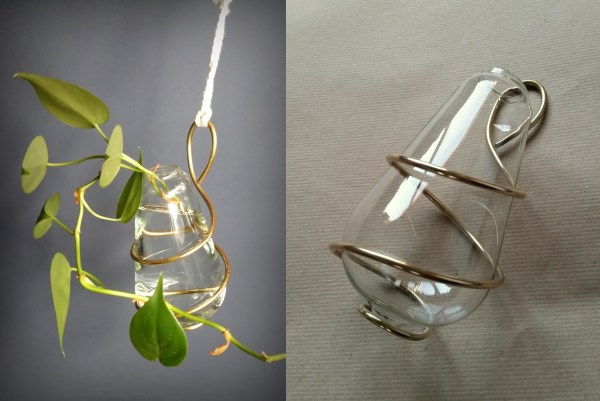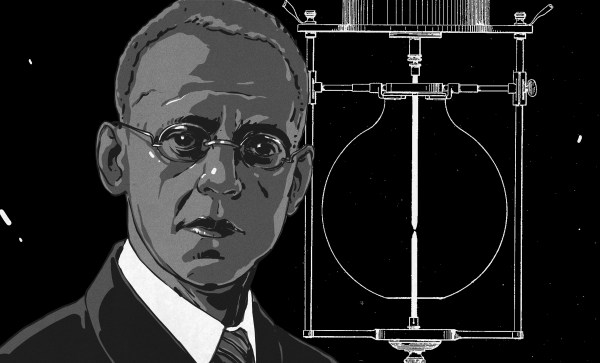High ceilings can make a residence feel open and airy, but they often come with difficult-to-reach light fittings. To better deal with that, [mattwach] built a motorized light bulb changer which makes the job much easier.
Light bulb changers already exist, but they typically need to be used on-axis with the light fitting, which for chandeliers and many other lights, can be difficult. Instead, [mattwach’s] design allows the device to be used at 90-degree angles, and motorizes it for added ease of use.
A 12V gear motor does the work of turning the contraption, and has more than enough torque to get the job done. A flanged coupling is used to attach the motor to the light bulb changer itself. An ATTiny85 microcontroller is then used to control the motor via an L293D H-bridge driver. A PS2 thumbstick is hooked up for user input, and all the electronics is mounted on a broomstick along with the light bulb end effector mounted at a right angle.
Changing a bulb is then as simple as slipping the end effector over a bulb, and flicking the thumbstick in the direction to unscrew the light. It can then be removed, and then replaced with a fresh bulb, screwed in by pushing the thumbstick in the other direction.
Normally, such a task would be quite a sketchy proposition when done on the top of a tall ladder. Instead, it becomes an easy job done from the safety of an overlooking walkway, completed in less than half an hour when changing a full 15-bulb chandelier.
Incidentally, if you’re swapping out your bulbs, you might be interested in the special royal lights you’re not allowed to buy. Video after the break.
Continue reading “Motorized Device Helps Swap Out Hard-To-Reach Light Bulbs”

